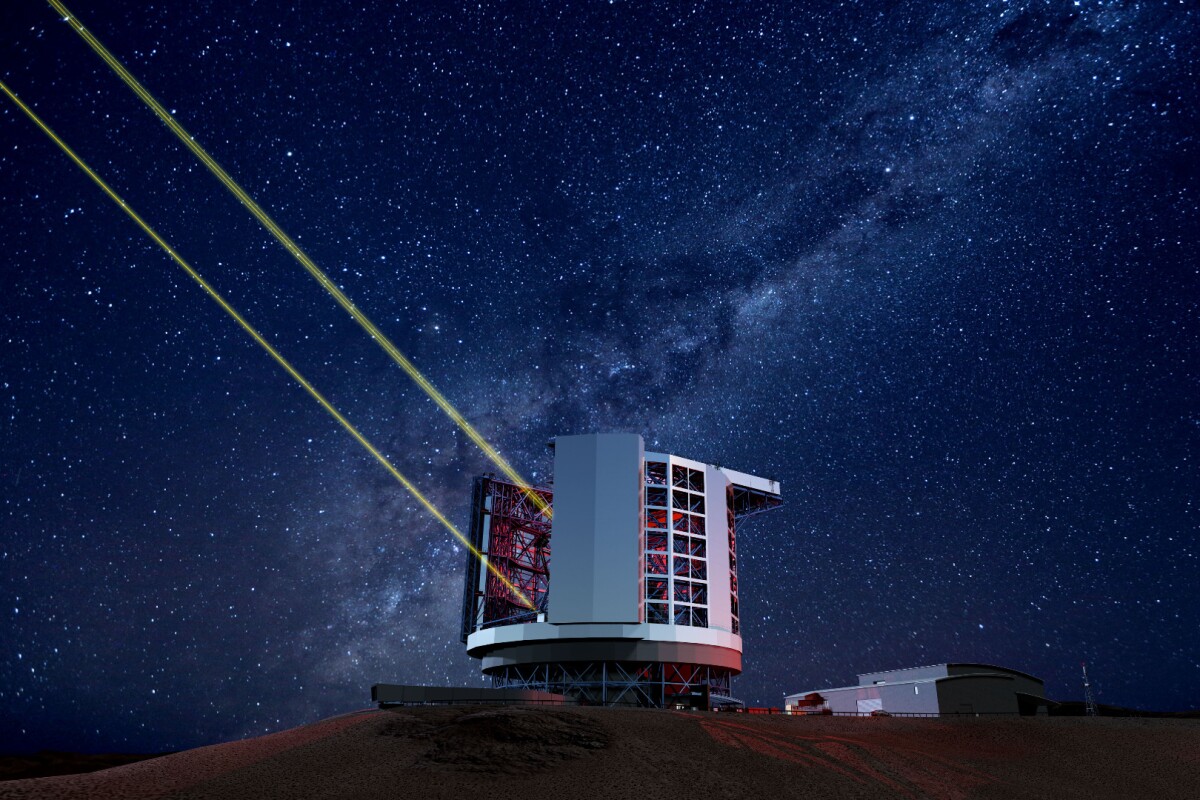The construction of the largest optical telescope ever built has moved one step closer today, with US$500 million in funding now committed from 11 international partners. Set to be the world's biggest and most powerful, the Giant Magellan Telescope (GMT) is constructed from seven huge mirrors that will span a total of 25.4-meters (82 ft), bringing in six times more light than any other large telescope. It is also claimed that the instrument will be able to resolve images up to ten times more clearly than the space-based Hubble telescope.
Set to sit high atop a hillside in Chile at the current site of the Las Campanas Observatory above the Atacama desert, the remote location and haze and light pollution free skies will allow the GMT the best chance to employ its incredible imaging capabilities.
With scientific partners including Australia, Brazil, Chile, Korea and the United States, the massive instrument, which will be housed in a 22-story high rotating building, is slated to take its first tentative image of the heavens by 2021 and become fully operational by 2024. At a cost estimated to be around US$1 billion dollars, this enormous eye on the sky has great things expected of it.

"The GMT will herald the beginning of a new era in astronomy," said chair of the Giant Magellan Telescope Organization (GMTO) Board of Directors, Wendy Freedman. "It will reveal the first objects to emit light in the universe, explore the mysteries of dark energy and dark matter, and identify potentially habitable planets in the Earth’s galactic neighborhood."
Consisting of seven separate 8.4-meter (27 ft) diameter segments, to create the combined 25.4-meter (82 ft) primary mirror, each mirror weighs approximately 15,000 kg (17 ton) and needs a year to prepare, cast, and cool. It then takes a further three years or more of meticulous, super-accurate finishing and polishing to produce the required level of accuracy for such a precise instrument.
So accurate, in fact, that the face of the mirror is the same level to within 19 nanometers across its entire surface. As such, if the mirror were expanded to the size of the continental United States, the tallest mountains would be only slightly more more than 1/2 in (12.5 mm) high, according to the mirror lab producing the reflectors at the University of Arizona.
Even though the primarymirrors will be amongst the most accurate ever made, and the skies above theGMT some of the clearest available on Earth, the atmosphere itself still holdsa challenge for this ground-based instrument. Adaptive opticssystems from researchers at the Australian National University (ANU) will helpremove distortions and aberrations caused by the Earth’s atmosphere, such asturbulence, that gives stars their distinctive twinkle.
"The nextgeneration of optical telescopes such as the GMT demand a new class ofastronomical instrumentation and facilities, and the ANU is well equipped tomeet this challenge," said Professor Colless, Director of the Research School of Astronomy and Astrophysics atANU.
The short video below outlinesthis new stage in the development of the GMT.








